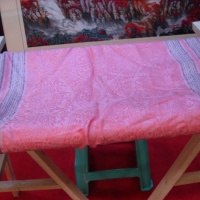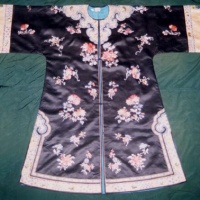- Home Page
- Fact Tours
Our sample tour itineraries of China and China travel packages are sorted by theme and available at competitive prices, you can browse what tours are right for you for your trip to China.
Popular China Tour Packages

Custom Tour Packages to China and Ask Our Experts for Free Enquiry !
- Coach Tours
- Destinations
Beijing, the capital of China. Its art treasures and universities have long made it a center of culture and art in China.
Beijing Top Attractions
Beijing City Tours
Best China Tours with Beijing
Shanghai, the cultural and economic center of East Asia. It renowned for its historical landmarks, the extensive and growing skyline.
Shanghai Top Attractions
Shanghai City Tours
Best China Tours with Shanghai
Xi'an, having held the position under several of the most important dynasties. It is the top destination to explore the facts of Chinese history.
Xi'an Top Attractions
Xi'an City Tours
Best China Tours with Xi'an
Huangshan boasts its culture, beautiful rivers, villages and mountains. It's home to 2 UNESCO World Heritage Sites and the Mecca of photographers.
Huangshan Top Attractions
Huangshan City Tours
Best China Tours with Huangshan
Sichuan is the cradle of the Shu culture, panda, mahjong, teahouse and spicy food. The province ranks first in China by number of UNESCO World Heritage Sites. It is called "the Heaven of Abundance".
Sichuan Top Attractions
Sichuan Tour Packages
Best China Tours with Sichuan
Yunnan, literally means the south of colorful clouds, due to its beautiful landscapes, mild climate and diverse ethnic cultures and traditions, is one of China's major tourist destinations.
Yunnan Top Attractions
Tibet, the nearest land to the sky, is known for its breathtaking landscape, splendid culture, art, buildings, and mysterious religions.
Tibet Top Attractions
Tibet Tour Packages
Best China Tours with Tibet
Explore the lost civilizations by riding a camel! Travel across the Gobi and the desert, and over the high mountains. Our Silk Road tours including different sections of the Silk Road in China.
Silk Road Top Attractions
Silk Road Tour Packages
Best China Tours with Silk Road
Guilin, an internationally-known historical and cultural city, has long been renowned for its unique karst scenery. Its vicinities are the paradise of hiking, caving, rafting, biking and countryside exploring.
Guilin Top Attractions
- China Facts
- China Hotels
- Travel Photos
Arts and Crafts
- Chinese Silk
- Chinese Sculpture & Carving
- Chinese Quyi
- Chinese Shadow Puppet Show
- Chinese Pearls
- Chinese Paper Cut
- Chinese Painting
- Chinese Music
- Chinese Lacquer Ware
- Chinese Wushu or Kung Fu
- Chinese Jade
- Chinese Games
- Chinese Dances
- Chinese Culture
- Chinese Ceramics
- Chinese Calligraphy
- Ancinent Chinese Bronze Vessels
- Chinese Acrobatics
Chinese Silk
In ancient time, China was called 'The Empire of Clothing' because of Chinese silk products. It is well known that silk is discovered in China as one of the best materials for clothing - it has a look and feeling of richness that no other materials can match. However, very few people know when or where or how it is discovered. Actually, it could date back to the 30th Century BC when Huang Di (Yellow Emperor) came into power. By the time of the Shang and Zhou Dynasty, silk products had been well developed into a new stage. Eventually, silk industry reached a peak in the Han Dynasty.
 There are many legends about the discovery of silk; some of them are both romantic and mysterious. Legend has it that once there lived a father with his daughter, they had a magic horse, which could not only fly in the sky but also understand human language. One day, the father went out on business and did not come back for quite some time. The daughter made him a promise: If the horse could find her father, she would marry him. Finally her father came back with the horse, but he was shocked at his daughter's promise. Unwilling to let his daughter marry a horse, he killed the innocent horse. And then miracle happened! The horse's skin carried the girl flying away. They flew and flew, at last, they stopped on a tree, and the moment the girl touched the tree, she turned into a silkworm. Everyday, she spit long and thin silks. The silks just represented her feeling of missing him. Another less romantic but more convincing explanation is that some ancient Chinese women found this wonderful silk by chance. When they were picking up fruits from the trees, they found a special kind of fruit, white but too hard to eat, so they boiled the fruit in hot water but they still could hardly eat it. At last, they lost their patience and began to beat them with big sticks. In this way, silks and silkworms were discovered. And the white hard fruit is a cocoon!
There are many legends about the discovery of silk; some of them are both romantic and mysterious. Legend has it that once there lived a father with his daughter, they had a magic horse, which could not only fly in the sky but also understand human language. One day, the father went out on business and did not come back for quite some time. The daughter made him a promise: If the horse could find her father, she would marry him. Finally her father came back with the horse, but he was shocked at his daughter's promise. Unwilling to let his daughter marry a horse, he killed the innocent horse. And then miracle happened! The horse's skin carried the girl flying away. They flew and flew, at last, they stopped on a tree, and the moment the girl touched the tree, she turned into a silkworm. Everyday, she spit long and thin silks. The silks just represented her feeling of missing him. Another less romantic but more convincing explanation is that some ancient Chinese women found this wonderful silk by chance. When they were picking up fruits from the trees, they found a special kind of fruit, white but too hard to eat, so they boiled the fruit in hot water but they still could hardly eat it. At last, they lost their patience and began to beat them with big sticks. In this way, silks and silkworms were discovered. And the white hard fruit is a cocoon!
Silk Trade
The business of raising silkworms and unwinding cocoons is now known as silk culture or sericulture. It takes an average of 25-28 days for a silkworm, which is no bigger than an ant, to grow old enough to spin cocoon. Then the women farmers will pick them up one by one to piles of straws, and then the silkworm will attach itself to the straw, with its legs to the outside and begin to spin. The next step is unwinding the cocoons; it is done by reeling girls. The cocoons are heated to kill the pupae, this must be done at the right time, otherwise, the pupas are bound to turn into moths, and moths will make a hole in the cocoons, which will be useless for reeling. To unwind the cocoons, first put them in a basin filled with hot water, find the loose end of the cocoon, and then twist them, carry then to a small wheel, thus the cocoons will be unwound.
At last, two workers measure them into a certain length, twist them, they are called raw silk, then they are dyed and woven into cloth. An interesting fact is that we can unwind about 1,000 meters long silk from one cocoon, while 111 cocoons are needed for a man's tie, and 630 cocoons are needed for a woman's blouse. Chinese people developed new way by using silk to make clothes since the discovery of silk. This kind of clothes became popular soon. At that time, China's technology was developing fast. Emperor Wu Di of western Han Dynasty decided to develop trade with other countries.
Silk Road
Since 138 B.C., when Zhang Qian went to the Western Regions as a special envoy of Western Han, the Silk Road has linked the Chinese culture with the Indian, Roman and Persian cultures , spreading such great Chinese inventions as silk, gunpowder, papermaking and printing far in to the West while introducing Buddhism, Nestorian and Islamic cultures and arts into China... To build a road becomes priority to trade silk.
For nearly 60 years of war, the world famous ancient Silk Road was built up at cost of many losses of life and treasures. It started from Chang'an (now Xi'an), across Middle Asia, South Asia and West Asia. Many countries of Asia and Europe were connected. From then on, Chinese silk, along with many other Chinese inventions, were passed to Europe. Romans, especially women, were crazy for Chinese silk. Before that, Romans used to make clothes with linen cloth, animal skin and wool fabric. Now they all turned to silk. It was a symbol of wealth and high social status for them to wear silk clothes. One day, an Indian monk came to visit the Emperor. This monk had been living in China for several years and knew the method of raising silkworms. The Emperor promised a high profit of the monk, the monk hid several cocoons in his cane and took it to Rome. Then, the technology of raising silkworms spread out.
Thousands of years have passed since China first discovered silkworms. Nowadays, silk, in some sense, is still some kind of luxury. Some countries are trying some new ways to make silk without silkworms. Hopefully, they can be successful. But whatever the result, nobody should forget that silk was, still is, and will always be a priceless treasure. Now, these pictures with poetic charm such as the Western Region dance, camels reading through the desert with their tingling bells, boundless stretch of yellow sand, and a world of sparkling crystal of ice and snow will reappear. The ancient Silk Road unfolds before you a heroic and beautiful epic...
Welcome to take a Suzhou tour package, or Shanghai tour package and find relevant tours to experience a Silk Road tour in China!
Questions & Comments
Home | About Us | Partnerships | Terms & Conditions | Privacy & Security | Payment Guide | Resource Links| Sitemap
Email: contact@chinafacttours.com, Tel: +86-773-3810160, Fax: (+86) 773-3810333
Copyright © 2008-2020 China Fact Tours. All rights reserved
![]()









